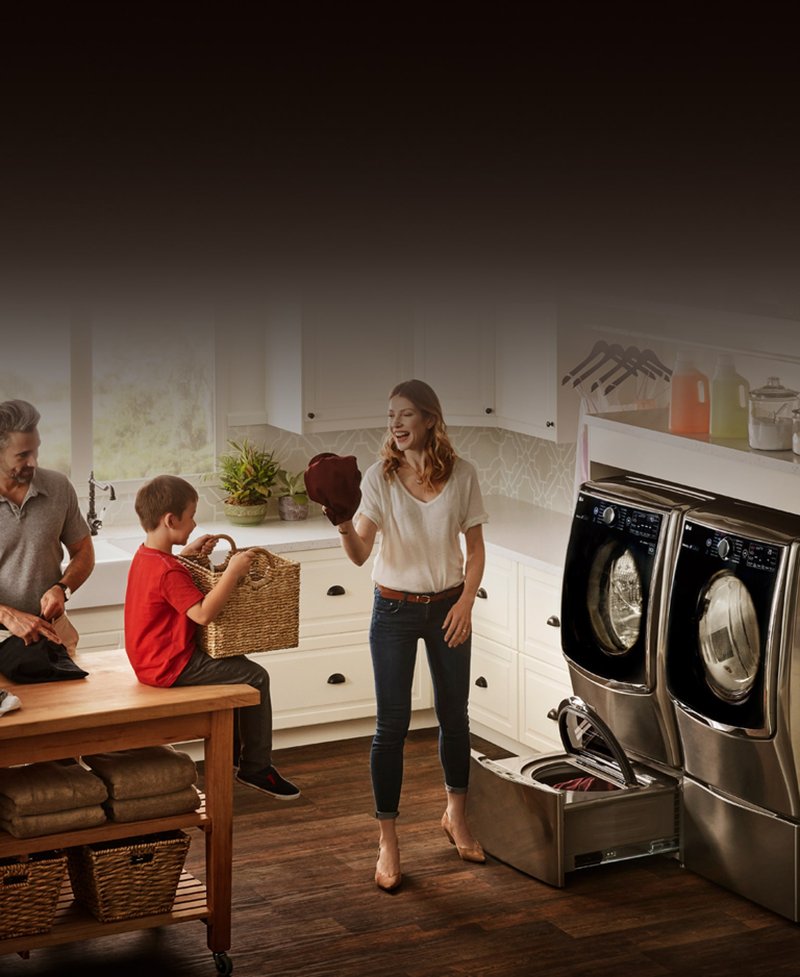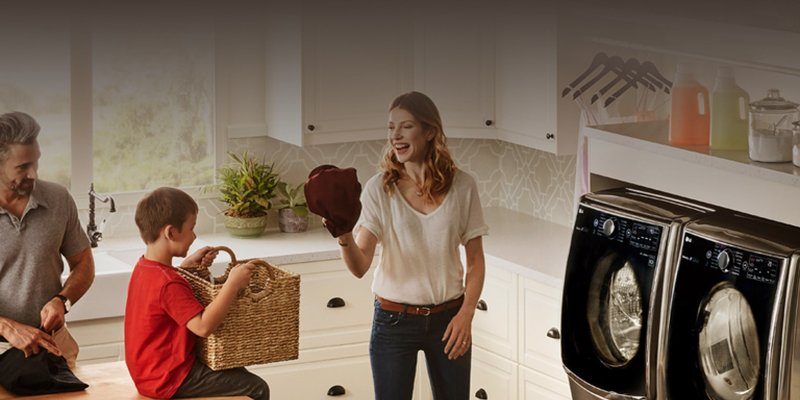
But here’s the thing: warranties aren’t always straightforward. It’s easy to assume you’re protected against any hiccup, but the reality is a bit more nuanced. So, what does LG’s warranty *really* cover for laundry appliances like washing machines and dryers? And what happens if your machine starts acting up—maybe refusing to spin or making a noise that sounds suspiciously like a small jet taking off in your laundry room? Let’s unravel exactly what’s covered, what’s not, and how you can make the most of your LG warranty, one spin cycle at a time.
The Basics of the LG Laundry Appliances Warranty
First off, LG offers different warranty coverage depending on whether you have a washer or a dryer, and the specific model you own. But most new LG laundry appliances come with a standard manufacturer’s warranty. Think of this as a company’s way of saying, “We stand by our product.” For most washers and dryers, that means coverage on both *parts* and *labor* for a set period.
Typically, LG provides:
- One year of coverage for both parts and labor on general manufacturing defects. If your appliance stops working because of something LG did wrong at the factory, you’re in good hands.
- Extended parts-only coverage on some major components, like the motor or drum, for up to 10 years (but not labor after the first year).
The standard warranty doesn’t cover issues from accidents, misuse, or normal wear and tear. So if you accidentally drop a wrench inside while trying to pair the remote start on your smart washer, you might be out of luck.
What Parts and Problems Are Covered?
You might be wondering: “What exactly does this warranty protect?” Here’s a closer look at the nuts and bolts.
LG’s warranty mostly covers manufacturer defects. That means problems that aren’t your fault, but rather something that went wrong when the machine was made. Imagine your washing machine refuses to spin, the motor gives out, or the control board won’t sync with the rest of the system—even after a reset. If these issues are due to faulty parts or workmanship, LG will usually repair or replace them, free of charge during the warranty window.
Here are some examples of what’s often covered:
- Drive motor failures—like when your washer drum won’t rotate even after troubleshooting.
- Drum or tub defects—such as cracks or leaks that appear without any incident on your part.
- Electronic control boards—so, if your washer won’t respond or loses connection during a cycle, and it’s due to a bad board, you’re covered.
- Basic wiring and sensors—in case your dryer refuses to pair with other smart appliances, or the sensor keeps giving false readings.
It’s important to note: the warranty won’t cover everything. If you mess with the code to try to hack new features or damage the battery in a remote start module, that’s outside the coverage zone.
What Isn’t Covered By LG’s Warranty?
Let me explain this upfront: LG’s warranty isn’t a fix-it ticket for every laundry mishap. There are clear limits—kind of like a “No Swimming” sign posted right where the river looks most inviting.
Here’s what’s *not* usually covered:
- Normal wear and tear—like faded buttons, small scratches, or worn seals. These are just signs your appliance is living its full life.
- Accidental damage—if your kid tries using the washer lid as a trampoline or you overload the drum and snap the door, repairs won’t be free.
- Improper installation or use—if you try to code your own remote control pairing sequence and short-circuit the electronics, that’s on you.
- Battery replacements—for remote modules or smart features, you’ll need to handle replacing the batteries yourself.
If you’re ever in doubt, it’s worth checking your user manual or reaching out to LG support. They’ll help you pinpoint whether your specific problem is covered, or if you’ll need to budget for a repair.
How Does The Warranty Process Work?
Here’s the step-by-step, plain and simple. Say your dryer suddenly won’t heat up—no matter how many times you reset or troubleshoot it.
The process goes smoother if you keep your proof of purchase and model number handy. It’s like having your boarding pass ready at airport security: less hassle, less waiting.
Follow these steps:
- Contact LG customer support—either online or by phone. Explain the issue in detail—mention if you’ve tried to pair, sync, or reset any smart features.
- Schedule a technician—if customer service confirms it’s likely a warranty-covered defect, they’ll send an authorized technician to your home.
- Inspection and repair—the technician diagnoses the issue. If it’s a covered problem (like a blown motor or faulty code in the main board), repairs and parts are free.
- After the first year—if you’re outside the initial parts & labor window but within the extended parts warranty (say, for the motor), LG will supply the part, but you might pay labor costs.
If your issue turns out to be something not covered (like a sock stuck in the drain pump), you’ll get a quote for repair. It’s always good to ask for a cost estimate before saying yes to any service.
Extra Coverage: Extended Warranties & Protection Plans
Some folks like extra peace of mind. LG and third-party retailers often offer extended warranties or protection plans. It’s a bit like travel insurance—sometimes you need it, sometimes you don’t.
Here’s what you’ll usually get with these plans:
- Longer coverage—extending parts and labor repair beyond the standard one year, often up to 3-5 years total.
- Accidental damage protection—which might include things like drops, spills, or even some battery replacements on smart modules.
- In-home service perks—like expedited visits or courtesy appliance rentals while yours is being fixed.
Honestly, whether you need extra protection depends on your comfort level and how much you use (and maybe abuse) your appliances. If your laundry room is a war zone for sports gear and muddy kids, it could be worth it.
Comparing LG’s Warranty to Other Brands
You might be asking, “Is LG’s warranty better or worse than other big names?” Here’s the thing—most major appliance brands have pretty similar warranty structures, with a few unique twists.
For example:
- Samsung and Whirlpool both offer one-year parts and labor, with 10-year coverage on select parts (like direct drive motors), just like LG.
- Some high-end brands toss in white-glove service or longer labor coverage as a bonus, but you’ll often pay more up front.
- Universal appliance protection plans can cover multiple brands if you have a mixed laundry setup, but the fine print can get tricky.
LG’s big advantage? Their customer support for troubleshooting, code resets, and smart appliance issues is often rated better than average. If you’re comfortable with tech and remote pairing, you’ll probably appreciate the extra online resources.
Common Warranty Troubleshooting Tips
Before you call in the cavalry, there are a few things you can try at home that might save you time—or at least help you gather evidence for a warranty claim.
- Reset the appliance—unplug it for a minute, then plug it back in. Sometimes that’s all it takes to clear a weird code or sync issue.
- Check for error codes—LG washers and dryers often display a code if something’s wrong. Search online or in your manual for what it means.
- Test smart features—if remote start, pairing, or app controls aren’t working, check your Wi-Fi, battery, or try re-syncing the device.
- Clean key sensors—sometimes a little lint or moisture can trip up your machine, and a quick clean is all it needs.
If these fixes don’t solve the problem, and you suspect it’s a real defect, you’re in a good spot to start the warranty claim process.
Making the Most of Your LG Coverage
Here’s my best advice, after seeing a lot of people get tripped up: register your appliance right after purchase, and hang onto your receipts. It’s a simple move that can save you major hassle if you ever need warranty support.
And don’t be shy about using LG’s customer service—especially if you’re confused about a feature, can’t pair your remote, or need help with a stubborn error code. The more info you can give up front, the faster you’ll get a resolution.
Remember: a warranty isn’t just a legal document, it’s a relationship. Treat your appliance well, and don’t hesitate to ask for help when something’s not right.
At the end of the day, the LG laundry appliances warranty is there to help you if things go sideways—and knowing what’s covered lets you focus on what really matters: keeping your favorite jeans clean and your laundry room drama-free.
